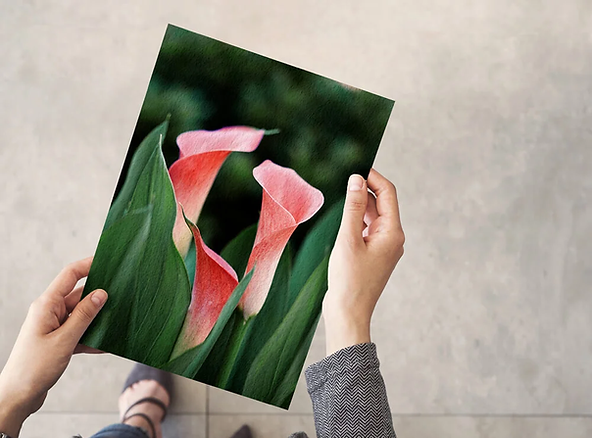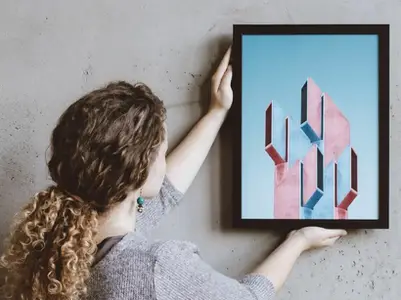Are Art Prints Worth Anything?
Yes, they can be great investments for both art collectors and art lovers, but not all art prints are worth their weight in gold.
Scarcity and availability affect the value of art prints as well as their popularity, quality, and price.
The buyer is ultimately responsible for determining the value of a product in any market where supply and demand play a role.
When it comes to art prints, some collectors wonder, “Why are they so expensive?” Purchasing from a well-known collection or artist, like William Russell Flint autographed prints, is the answer to this.
Printed fine art should not be prohibitively expensive.

Who Buys Art Prints?
People that purchase art prints include:
- People who are interested in art are known as art collectors.
- Investors
- For those of you who are (fans of artists or genre fans)
- Giving presents or hiring interior designers?
Art collectors
Both art investors and art aficionados can be found among art collectors. Collecting prints may be a risky business for certain collectors because of their proclivity for either overpaying or being extremely picky about the type of print they buy and who they acquire it from.
Investors
When it comes to purchasing a print, buyers will use more logic and logic will be applied. For example, they are collectors of works by a single artist in a particular style or genre. Investors are more likely to buy from a well-known art dealer or network.
Investors rarely buy prints online unless they’re seeking for an undervalued or previously unknown gem.
In addition, they’ll be on the lookout for evidence of validity, such as a well-known certificate (I will go into more detail further in this article).
Fans
The second most common buyer of art prints is a fan. In contrast to a collector or investor, this type of consumer is less well-versed in the art of collecting.
It’s not uncommon for fans to keep tabs on their favourite artists via social media platforms like Instagram. They enjoy interacting with the artists, following their progress, and developing a connection with them as they evolve.
For three of these artists, you can buy prints directly from them, either at their studios or through their own online stores.
Fans are more likely to be familiar with an artist’s work because they buy prints and originals directly from the artist, thus cementing their connection.
Gift Giving or Professional Decorators
Customers that are interested in purchasing low-value prints or the rights to an image include those who are seeking for gift giving or professional decorators.
In general, they buy things that fit into a larger narrative or that they believe someone else will like.
However, they are a poor indicator of what is truly important.
What are Art Prints?
As far as I can tell, art prints have been around since the first century AD in China. Art prints are basically reproductions of an original piece of art utilising a variety of approaches and techniques.
The worth of a piece of art depends on the method used by the artist to create it.
The quality of a print is not the same for all of them.

Do The Types of Art Prints Affect Value?
Some examples include digital printing, screen-printing and photography as part of the fine art process of Traditional Printmaking.
This essay will be brief because each printing technique deserves its own topic.
- Woodcut
- Engraving
- Etching
- Lithography
- Screen-printing
- Monotype
- Monoprint
- printing by means of inkjet or laser
- Aerial Photography with Foil
Modern art prints, especially those priced below $100, are almost often digital prints, photographic prints, or screen prints, depending on the artist.
Older techniques like woodcut, engraving, etching, and lithography necessitate a great deal of labour from the artist and can therefore be considered original works of art in its own right. These have a far higher monetary value, making them a wise investment.
If you’re looking to buy an art print or have spoken to a dealer or the artist, they may present you with a variety of choices at various pricing points.
There are different price points for prints depending on whether they are from a Limited Edition or an Open Edition.
You may be perplexed as to the meaning of the terms “Signed” and “Unsigned” when presented with the option of purchasing prints.
Are Limited Edition Art Prints More Valuable than Regular Art Prints?
A print from a single plate that is limited to a specific number of copies is known as a limited edition art print.
There should be no more copies of a limited edition item manufactured from that plate or print run.
Limited editions are frequently autographed by the artist in pencil on the back.
Prints in a limited edition are often numbered sequentially, beginning with 1 and ending with the last print produced.
You should be able to see the numbering on your print, such as 55/70, where 55 is the print you own and 70 is the whole print run.
These are more valuable than Open Edition art prints.

Are Regular Art Prints More Valuable than Limited Edition Art Prints?
Unlike a limited edition print, an open edition print is not signed by the artist and does not have a numbering system (since the edition size might go on indefinitely). Open edition prints are made in the same way as limited edition prints, but they are not limited in quantity.
These have a low monetary worth. It is possible to print them repeatedly for several years.
What are Signed Prints?
Prints that have been personally signed by the artist are known as “signed” prints because of the rarity of the edition they are part of.
What are Unsigned Prints?
If a print is unsigned, it is likely to be a mass-produced print that does not bear the artist’s signature. Keep an eye out for fraudulent signatures and print run numbers on unsigned prints.
Do a search on Google for other prints in the signed print run to ensure that the signature on the one you bought is the same as the others and that there are no duplicates.

Are Artists’ Proofs More Valuable Than Limited Edition Art Prints?
In the case of a signed print run, artist proofs are frequently numbered in the low twenties.
For the artist, they are a way to ensure that a larger print run would meet their standards.
Artist proofs are frequently more valuable than signed limited editions of art prints since they might have unique features, much like an original piece of art.
Is an ‘After an Artist’ Print Worth Buying?
Typically, a print made by a talented artist after copying an original work of art is referred to as an artist print. In most cases, these aren’t knockoffs but legitimate reprints.
The Norman Lindsay that I bought came with this accessory. A certificate of authenticity was even included!
Should I Buy Reproductions of Prints vs. Original Art Prints?
There have been numerous reproductions over the years. It’s nothing unusual for artists to enlist the help of their apprentices in the fabrication of replicas of their own work.
After an Artist print is a reproduction, just like some originals, and it is just as valuable as some originals.
Even Nevertheless, technological advances have made it much easier to produce reproductions of artwork that closely resemble the original.
Authentic, hand-signed, and/or numbered original art prints are your best bet if you want to spend your money on something that will appreciate in value over time.
A mass-produced colour copy labelled “Limited Edition” will do if you’re a fan or just want something lovely to hang on the wall. Do not, however, expect a return on your investment.
Hand-signed and numbered original art prints are common, usually in a medium other than the original artwork, such as pencil.
The quantity of hand-signed original art prints made by the artist is similarly limited; typically, there are fewer than 100 available for purchase.
Summary
Start by contacting local art dealers and checking out https://www.artprice.com/ whether you currently own any prints or are looking for a price comparison on the market for new artworks.
You can begin by searching for the artist you’re looking for on this site (if your artists is not listed, I would do a little more research before buying the print).
If you’re interested in the artist’s other works, ArtPrice can also give you with a pricing guide.
A print should not cost more than an original piece of art. So, please, do your homework.
That doesn’t indicate that the print is a fake or that the artist is a bad investment if the artist isn’t listed on ArtPrice.
Artists and aspiring artists may actually be selling their work directly to you or you may be purchasing prints of their work.
Some semi-known artists that are either coming into the mainstream or are poised to do so are among the artists I follow and admire, as I mentioned previously.
For three of these artists, you can buy prints directly from them, either at their studios or through their own online stores.
Their followers are in the hundreds of thousands and their works, both original and prints, are scooped up as soon as they become available. Despite this, I doubt they will be included in a professional index or catalogue.
Despite what a dealer might tell you, I believe these pieces are of great value. It’s important to be a fan of the art before you buy and cling onto it for the long haul.
If you can afford it, buy what you like. Don’t expect to make a lot of money by purchasing art prints. Buying art is a way to support both the artist and the work itself.
What are the resale values of art prints? Art prints, as a general rule, must have a very limited run, be difficult to obtain, and be manufactured with high-quality materials in order to be valuable.
Only works created by the artist’s own hands have a chance of increasing in value, so if you’re still unsure, acquire original art by well-known or up-and-coming artists.
The perception of value, like that of beauty, is subjective. So, how much are original art prints worth? The owner and some collectors agree that they are.


























